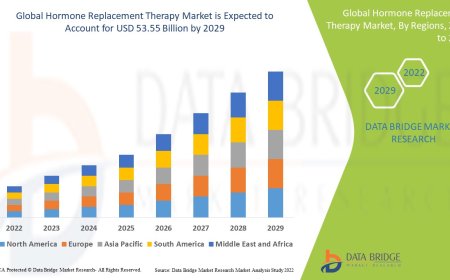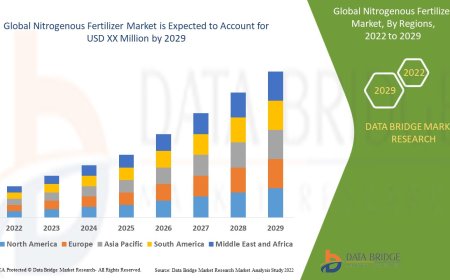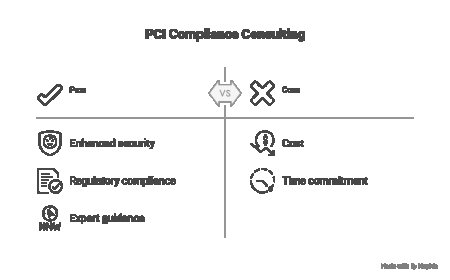How Healthcare Providers Use BI to Improve Patient Outcomes and Operational Efficiency with the keyword Business Intelligence solutions
Business Intelligence solutions come into play, empowering healthcare organizations to make informed decisions that directly improve patient outcomes and operational efficiency.

Introduction
Healthcare is one of the most data-intensive sectors globally, generating vast amounts of information daily, from patient records to treatment outcomes, staffing schedules, and resource allocation. The challenge for healthcare providers is not just to collect this data but to turn it into actionable insights that enhance patient care and streamline operations. This is where Business Intelligence solutions come into play, empowering healthcare organizations to make informed decisions that directly improve patient outcomes and operational efficiency.
The use of data-driven decision-making in healthcare has gained significant traction as providers seek to reduce medical errors, enhance personalized care, and optimize their resources. By leveraging data analytics, hospitals and clinics can identify trends, predict patient risks, and implement preventive measures before problems escalate. This proactive approach is key to improving patient safety and delivering high-quality care.
Enhancing Patient Outcomes through Data Analytics
One of the most impactful ways healthcare providers utilize BI is in improving patient outcomes. Through advanced analytics, providers can sift through historical and real-time patient data to uncover patterns that might otherwise go unnoticed. For example, predictive analytics can identify patients at high risk of chronic diseases, readmission, or complications. Armed with this knowledge, clinicians can develop personalized care plans tailored to each patients unique needs.
Additionally, BI tools enable healthcare teams to monitor patient progress continuously and adjust treatments based on real-time data. This continuous feedback loop not only improves the quality of care but also helps reduce hospital stays and readmission rates, ultimately saving lives and cutting costs.
Streamlining Clinical Workflows and Resource Management
Operational efficiency is another critical area where healthcare providers benefit from BI. Efficient scheduling of staff, optimization of operating rooms, and better management of medical equipment are essential to providing timely care without unnecessary delays or bottlenecks. By analyzing historical data on patient flow and resource usage, healthcare administrators can forecast demand and allocate resources more effectively.
For instance, BI dashboards can reveal peak times in emergency departments, allowing hospitals to schedule additional staff or open more treatment areas in advance. Similarly, insights into equipment utilization help prevent overbooking or underuse of expensive diagnostic machines, ensuring that investments yield maximum value.
Reducing Costs While Maintaining Quality
In the era of value-based care, reducing healthcare costs without compromising quality is a paramount goal. BI solutions enable providers to identify inefficiencies, unnecessary procedures, and areas of waste within their operations. Cost analysis linked with clinical outcomes data helps organizations focus on treatments and interventions that deliver the best results for patients at the lowest cost.
For example, by analyzing the outcomes of different treatment protocols, providers can determine which approaches are most effective for specific conditions, avoiding costly trial-and-error methods. Additionally, BI can highlight billing inconsistencies or insurance claim denials, helping to improve revenue cycle management and financial performance.
Supporting Population Health Management
Population health management is an increasingly important focus for healthcare systems aiming to improve health outcomes across entire communities. BI tools enable providers to aggregate and analyze data from various sources, such as electronic health records (EHRs), social determinants of health, and public health databases. This holistic view helps identify at-risk populations, track disease outbreaks, and design targeted intervention programs.
By understanding broader health trends and risk factors, healthcare organizations can collaborate with public health authorities and community resources to implement preventive care initiatives. These efforts help reduce hospital admissions, improve chronic disease management, and enhance overall community health.
Enabling Compliance and Risk Management
Healthcare providers operate in a highly regulated environment, with strict requirements for data privacy, security, and reporting. BI solutions play a vital role in ensuring compliance by automating data collection, monitoring, and reporting processes. Providers can generate audit-ready reports quickly, demonstrating adherence to regulations such as HIPAA and meaningful use criteria.
Moreover, BI tools help identify potential risks before they escalate into serious issues. For example, by analyzing patterns in adverse events or medication errors, hospitals can implement corrective actions and improve patient safety protocols. This proactive risk management not only protects patients but also reduces the likelihood of costly legal actions and reputational damage.
Driving Innovation with Advanced BI Technologies
Healthcare providers are increasingly adopting cutting-edge BI technologies such as artificial intelligence (AI), machine learning (ML), and natural language processing (NLP) to further enhance patient care and operational efficiency. These technologies allow for deeper insights from unstructured data, such as physician notes, medical imaging, and genomic information.
AI-powered BI platforms can provide decision support by recommending treatment options based on vast datasets of clinical evidence. Machine learning models improve over time, enabling more accurate predictions of patient outcomes and resource needs. These advancements accelerate the shift from reactive to proactive healthcare, fostering innovation and improved care delivery.
Improving Patient Engagement and Experience
Another critical benefit of BI in healthcare is improving patient engagement. By analyzing patient feedback, satisfaction surveys, and communication patterns, providers can identify areas where the patient experience can be enhanced. BI dashboards enable personalized communication strategies, appointment reminders, and health education tailored to individual preferences and conditions.
Engaged patients are more likely to adhere to treatment plans, attend follow-up appointments, and make healthier lifestyle choices. This collaborative approach between patients and providers supports better health outcomes and builds long-term trust in the healthcare system.
Challenges and Considerations in Implementing BI
While the benefits of BI in healthcare are significant, implementing these solutions comes with challenges. Data integration across disparate systems, ensuring data quality and accuracy, and maintaining patient privacy are ongoing concerns. Successful BI adoption requires strong leadership, cross-functional collaboration, and continuous staff training.
Healthcare organizations must also invest in scalable BI infrastructure and select tools that align with their specific needs and goals. Partnering with experienced vendors and leveraging best practices in data governance can help overcome these challenges and maximize the value of BI initiatives.
Conclusion
In summary, healthcare providers are leveraging Business Intelligence solutions to transform vast data into actionable insights that improve patient outcomes and operational efficiency. From predictive analytics and population health management to workflow optimization and compliance, BI is enabling smarter, data-driven decisions that enhance care quality while controlling costs. As BI technologies continue to evolve, healthcare organizations that effectively harness data will be best positioned to meet the challenges of modern healthcare and deliver superior patient experiences.





































